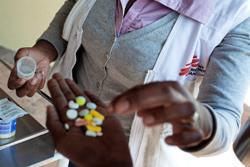Government’s DR-TB plan

According to head of the health department’s TB Control Programme there is a realisation that the number of hospitals beds dedicated to DR-TB are not sufficient leading to long waiting lists with patients dying while waiting to get a bed.
‘This of course also means that the patient continues to spread the DR-TB after being diagnosed,’ said Mvusi.
Mvusi confirmed that those patients who were not ill and sputum smear negative (up to one-third of DR-TB cases in SA) would be treated on an outpatient basis and be allowed to remain at home.
‘We have to acknowledge that not all clinics will be able to treat DR-TB patients so we need to phase this in,’ Mvusi cautioned.
She explained that the clinic sisters treating DR-TB patients at primary care level would monitor the patients closely for drug side effects and other problems.
A community health worker, reporting to the nurse, would visit the patients at home and monitor their progress.
Those patients who are still infectious would have their DR-TB initiated at an MDR-TB hospital or site, which would be close to the patients’ homes.
Mvusi said the goal was to have one such site in each district. The health department was in the process of setting up and staffing these sites with some already up and running.
Mvusi said that extensively-drug resistant patients would continue to be managed at central hospitals.
Author

Health-e News is South Africa's dedicated health news service and home to OurHealth citizen journalism. Follow us on Twitter @HealtheNews
Republish this article
This work is licensed under a Creative Commons Attribution-NoDerivatives 4.0 International License.
Unless otherwise noted, you can republish our articles for free under a Creative Commons license. Here’s what you need to know:
You have to credit Health-e News. In the byline, we prefer “Author Name, Publication.” At the top of the text of your story, include a line that reads: “This story was originally published by Health-e News.” You must link the word “Health-e News” to the original URL of the story.
You must include all of the links from our story, including our newsletter sign up link.
If you use canonical metadata, please use the Health-e News URL. For more information about canonical metadata, click here.
You can’t edit our material, except to reflect relative changes in time, location and editorial style. (For example, “yesterday” can be changed to “last week”)
You have no rights to sell, license, syndicate, or otherwise represent yourself as the authorized owner of our material to any third parties. This means that you cannot actively publish or submit our work for syndication to third party platforms or apps like Apple News or Google News. Health-e News understands that publishers cannot fully control when certain third parties automatically summarise or crawl content from publishers’ own sites.
You can’t republish our material wholesale, or automatically; you need to select stories to be republished individually.
If you share republished stories on social media, we’d appreciate being tagged in your posts. You can find us on Twitter @HealthENews, Instagram @healthenews, and Facebook Health-e News Service.
You can grab HTML code for our stories easily. Click on the Creative Commons logo on our stories. You’ll find it with the other share buttons.
If you have any other questions, contact info@health-e.org.za.
Government’s DR-TB plan
by Health-e News, Health-e News
March 23, 2011
MOST READ
Unemployed doctor in Mpumalanga speaks out about the dire situation
Zandspruit clinic turns patients away after 9am
Gauteng NPOs face closure due to budget cuts
People are urged to get the flu jab but Free State clinics have no shots
EDITOR'S PICKS
Related


Malnutrition in South Africa: how one community wants resources to be spent

